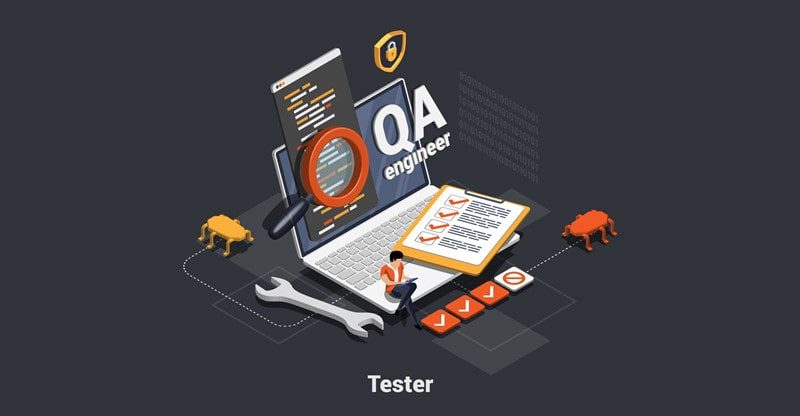
High quality assurance testing is an important course of in software program growth that ensures the reliability, performance, and total high quality of a product. To realize a profitable software program launch, a well-structured High quality Assurance (QA) testing plan is important. On this article, we’ll delve into the assorted facets of making an efficient QA testing plan, together with its definition, aims, roles, varieties of testing, and the step-by-step course of to develop one.
Understanding High quality Assurance Testing Plan
A High quality Assurance Testing Plan is a documented technique that outlines the method, methodologies, and assets required to validate and confirm the software program’s compliance with predefined high quality requirements. It serves as a roadmap for the QA workforce, offering them with a transparent route on how you can proceed with the testing course of systematically.
Should you’re desirous about changing into a QA automation engineer, you may take qa automation engineer programs to boost your expertise.
Definition and Aims
The first goal of a QA testing plan is to determine and rectify defects, guaranteeing that the software program meets the desired high quality benchmarks earlier than launch. It goals to boost buyer satisfaction by delivering a dependable and error-free product. A well-executed testing plan minimizes the chance of post-release points and reduces the necessity for expensive bug fixes, in the end saving time and assets.
Roles and Obligations of QA Workforce Members
A QA testing workforce includes varied roles, every contributing to the success of the testing plan.
- High quality Assurance Supervisor: Accountable for the general planning, coordination, and execution of the testing course of. They make sure that the testing plan aligns with mission targets and successfully manages the QA workforce.
- Testers: They’re liable for executing the take a look at circumstances, figuring out defects, and reporting the outcomes to the QA supervisor.
- Check Automation Engineers: They develop and keep automated take a look at scripts to expedite repetitive testing duties and enhance testing effectivity.
- Enterprise Analysts: Collaborate with the QA workforce to know the mission necessities and translate them into take a look at circumstances.
- Topic Matter Consultants (SMEs): Provide beneficial insights and domain-specific data to make sure complete take a look at protection.
Forms of Testing
A well-rounded QA testing plan ought to embrace quite a lot of testing varieties, every serving a singular objective:
- Practical Testing: Validates whether or not the software program capabilities as meant, assembly the desired necessities.
- Efficiency Testing: Assesses the software program’s responsiveness and stability below various workloads.
- Compatibility Testing: Ensures the software program works seamlessly throughout totally different gadgets, working techniques, and browsers.
- Safety Testing: Identifies and addresses vulnerabilities that will compromise information safety.
- Usability Testing: Evaluates the user-friendliness of the software program, gauging person satisfaction and ease of navigation.
Steps to Develop a High quality Assurance Testing Plan
- Perceive the Challenge Necessities: The QA workforce should have a transparent understanding of the mission’s targets, options, and expectations.
- Determine Check Aims and Scope: Outline the particular aims and scope of the testing course of.
- Create Check Instances: Develop detailed take a look at circumstances based mostly on the necessities to information the testing course of.
- Prioritize Testing Sorts: Decide which testing varieties are most important for the mission and allocate assets accordingly.
- Set a Timeline: Set up a practical timeline for the testing course of, contemplating all testing phases.
- Allocate Assets: Assign roles and obligations to the QA workforce members based mostly on their experience.
- Implement and Monitor the Testing Plan: Start the testing course of, repeatedly monitoring progress and addressing any points that come up.
High quality Assurance Testing Plan Implementation
As soon as the High quality Assurance (QA) testing plan is developed, it enters the implementation part, the place the precise testing takes place. This part entails a number of essential steps to make sure the software program’s high quality and readiness for launch. Let’s discover every step of the QA testing plan implementation intimately:
Check Execution: Check execution is the method of working the take a look at circumstances outlined within the QA testing plan. The QA workforce, consisting of testers and take a look at automation engineers, carries out this part. They execute the take a look at circumstances and report the outcomes, together with each constructive and damaging outcomes. Check execution goals to validate whether or not the software program capabilities appropriately in response to the desired necessities.
Throughout this part, the testers simulate real-world eventualities to judge the software program’s efficiency, usability, performance, safety, and compatibility. The take a look at automation engineers contribute by working automated take a look at scripts to carry out repetitive and time-consuming exams effectively. In addition they analyze the take a look at outputs and determine any discrepancies or defects that require additional investigation.
Defect Administration: Defect administration is a vital facet of the QA testing plan implementation. Because the testers execute the take a look at circumstances, they might encounter defects or bugs within the software program. When a defect is recognized, it’s logged right into a defect monitoring system, which might be a bug monitoring device or a easy spreadsheet. The defect is documented with related info, equivalent to its severity, precedence, steps to breed, and the anticipated conduct.
The QA workforce collaborates with the event workforce to speak the recognized defects. The event workforce then investigates and resolves the problems. As soon as the defects are fastened, the testers retest the affected functionalities to make sure profitable decision.
Check Reporting: Check reporting entails documenting the take a look at execution outcomes and offering clear and concise reviews to stakeholders. Check reviews summarize the general testing progress, together with the variety of take a look at circumstances executed, the variety of defects discovered, and the move/fail standing of every take a look at case. These reviews are shared with mission managers, builders, and different related stakeholders to maintain them knowledgeable concerning the software program’s high quality standing.
Complete take a look at reviews assist mission stakeholders make knowledgeable choices concerning the readiness of the software program for launch. In addition they assist in figuring out traits, patterns, and areas that require additional enchancment.
Retesting and Regression Testing: After defects are fastened by the event workforce, the testers conduct retesting to make sure that the reported defects have been efficiently resolved. Retesting focuses solely on the particular functionalities affected by the defects.
Along with retesting, regression testing is carried out. Regression testing ensures that the fixes for the reported defects haven’t launched new points or negatively impacted different elements of the software program. It entails rerunning the beforehand executed take a look at circumstances to confirm the unchanged functionalities.
Signal-off and Closure: As soon as the QA workforce is glad with the software program’s high quality and all of the take a look at circumstances have been executed efficiently, they supply a proper sign-off. Signal-off signifies that the software program meets the predefined high quality requirements and is prepared for launch.
After sign-off, the mission enters the closure part, the place all of the QA testing actions are documented and archived. The take a look at artifacts, together with take a look at circumstances, take a look at reviews, and defect reviews, are saved for future reference and potential audits.
Conclusion
A well-structured High quality Assurance Testing Plan is indispensable for profitable software program growth. By understanding the mission, defining aims, allocating obligations, together with varied testing varieties, and following a scientific method, QA groups can improve the general high quality of the software program. Emphasizing testing, planning, and high quality assurance ends in a dependable and strong software program product, satisfying customers and stakeholders alike.


